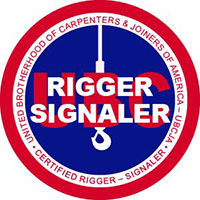


Certification Programs
Certified Rigger and Signaler Program (CRS)
The CICC offers a certification and the Certified Rigger and Signaler (CRS) designation to those candidates who meet the ANSI Safety Requirements for Rigging Qualifications and Responsibilities in the Construction Industry and OSHA 1926 Subpart CC — Cranes and Derricks in Construction.
Certification holders may state that they are Certified Riggers and Signalers and may use the CRS designation to market their credentials on business cards, resumes, etc.
Additionally, each CRS receives a certificate and their credentials are posted on their wallet-sized verification card. The verification card has a Quick Response (QR) code that links to a database of certification and qualification records. The certificates and electronic records contain the name, date of expiration, and the unique membership ID number of every individual who has successfully completed the CRS assessments.
The purpose of the CRS program is encompassed within the mission of the CICC. The purpose of credentialing Rigging and Signaling personnel is to provide the public, contractors, and coworkers with confidence in the quality of the deliverables and the safety of the practices being employed.
In support of this mission, the CRS program:
- Develops, evaluates, updates, and administers different written examination forms to assess the knowledge and skills required to competently perform the job tasks of a rigging and signaling professional.
- Develops, evaluates, updates, and administers a practical examination comprised of job simulation activities that imitate real-world rigging and signaling situations.
Eligibility Criteria
To become a CRS, a candidate must be a UBC member and must successfully complete a knowledge-based written examination and a hands-on practical skills assessment. By passing these examinations, a candidate demonstrates competency in the knowledge and skills required to perform safely and effectively as a CRS.
Prerequisites
In order to qualify to sit for the CRS assessment, a candidate must first attend at least 29 hours of training that includes both knowledge transfer and practical safe application. Course content must be designed to add to the hands-on experience gained in the field using rigging techniques and hardware. Please refer to the CRS Candidate Information Brochure for additional information on the training requirements.